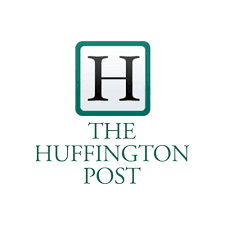|
Download File is not updated to reflect current online updates. The latest version of this report is only available online at rosskay.com .
Original Release Date: July 29th, 2016
Updated Release Date: January 29th, 2018 |
| ||
Canadians' “Right To Own”
The “Right to Own” Policy Framework:
Ross Kay Realty Consultants' understands that the lack of research into how the homeownership market functions and how its participants interact within it, has created a political environment where myth and fear drives the homeownership conversation. RKRC has stepped back and used our extensive knowledge on the home trading infrastructure to look at the issue of foreign ownership of Canadian homes and how through strategy, Canadians' “Right to Own” could be protected through a policy framework.
(International Trade Agreements are outside the bounds of RKRC expertise and as such the strategy outlined assumes political leaders who were signatories to any enacted trade agreements in the past preserved Canadian's “Right to Own”.)
The following policy framework was created to allow Canadians to maintain their “Right to Own” the family home. Ensuring Canadian homes remain in Canadian hands protects all members of Canadian society by allowing the Canadian tradition of wealth building through owning the family home to continue while ensuring governments maintain their ability to put a roof over the heads of even the most at risk of being left homeless.
Any policy enacted must cover all existing and future housing stock, preventing the circumvention of the intent of this policy through the choice of housing stock being acquired.
The “Right to Own” Policy Framework:
Ross Kay Realty Consultants' understands that the lack of research into how the homeownership market functions and how its participants interact within it, has created a political environment where myth and fear drives the homeownership conversation. RKRC has stepped back and used our extensive knowledge on the home trading infrastructure to look at the issue of foreign ownership of Canadian homes and how through strategy, Canadians' “Right to Own” could be protected through a policy framework.
(International Trade Agreements are outside the bounds of RKRC expertise and as such the strategy outlined assumes political leaders who were signatories to any enacted trade agreements in the past preserved Canadian's “Right to Own”.)
The following policy framework was created to allow Canadians to maintain their “Right to Own” the family home. Ensuring Canadian homes remain in Canadian hands protects all members of Canadian society by allowing the Canadian tradition of wealth building through owning the family home to continue while ensuring governments maintain their ability to put a roof over the heads of even the most at risk of being left homeless.
Any policy enacted must cover all existing and future housing stock, preventing the circumvention of the intent of this policy through the choice of housing stock being acquired.
Preface:
This policy framework is not created to harm Canadians or to place the family home at risk of losing it's Capital Gains exempt status, something all Canadians should be wary of in the coming years. The policy is created solely to protect the nation's housing stock from being owned by non-Canadians(1) and as such it's three tiered approach has been designed to reflect how the housing market functions long term, how the housing stock evolves over time and how owners interact with the market as they navigate the property ladder.
The following policy framework and strategy is provided without copyright restriction and no formal acknowledgment of Ross Kay Realty Consultants as the author of its creation is required in any subsequent use.
This policy framework is not created to harm Canadians or to place the family home at risk of losing it's Capital Gains exempt status, something all Canadians should be wary of in the coming years. The policy is created solely to protect the nation's housing stock from being owned by non-Canadians(1) and as such it's three tiered approach has been designed to reflect how the housing market functions long term, how the housing stock evolves over time and how owners interact with the market as they navigate the property ladder.
The following policy framework and strategy is provided without copyright restriction and no formal acknowledgment of Ross Kay Realty Consultants as the author of its creation is required in any subsequent use.
Highlights:
- a three tiered strategy that is designed to prevent circumvention of its intent
- designed to reduce foreign ownership rates to below 1%
- allows provincial and municipal agencies the ability of oversight and monitoring
- adds structural components to the home trading infrastructure at key points in the home trading process.
(1) The term non-Canadian was used in this report to identify people that do not hold Canadian Citizenship. It is used to simplify the discussion and separate those who the policy is intended to be enacted upon and those who it is not.
- a three tiered strategy that is designed to prevent circumvention of its intent
- designed to reduce foreign ownership rates to below 1%
- allows provincial and municipal agencies the ability of oversight and monitoring
- adds structural components to the home trading infrastructure at key points in the home trading process.
(1) The term non-Canadian was used in this report to identify people that do not hold Canadian Citizenship. It is used to simplify the discussion and separate those who the policy is intended to be enacted upon and those who it is not.
Part One:
Foreign Owner Acquisition Tax (FOAT)
At the time of acquisition a Foreign Owner Acquisition Tax (FOAT) of 8-17% (varies by municipal population density) is applied on the full appraised value of any home purchased by a non-Canadian (1). This tax is independent and separate to the transaction (all other common taxes and fees still apply) and structured to prevent the Tax from being reported as a loss against any future Capital Gains.
An Independent (CUSPAP not automated) Appraisal is required to ensure the Purchase Price has not been established, through contract provisions (currently legal in Canada), which could create a lower Purchase Price being recorded to circumvent the FOAT. The Cost of the Appraisal would be paid in advance by the Foreign Owner as part of their completion of the form, Application to Acquire Residential Real Estate by a Foreign Owner, where the Foreign Buyer agrees in advance that their right to acquire residential real estate is dependent on paying the FOAT. The Appraisal would be done by an independent fully Qualified Appraiser and the Valuation would be set to meet the full and entire definition of the CUSPAP appraisal.
Note: The Application must be completed with fees paid and on file with the government prior to any Sales contract being entered into on both new and resale homes. This is done to prevent any financial damage being done to a Canadian homeowner who agrees to sell the their family home and subsequently could be informed the buyer had no legal right to acquire their home.
All standard real estate forms used to trade real estate in the province should immediately include a new standard clause referencing the Application requirement and further a written acknowledgment that said Application has been attached to the sales contract.
Foreign Owner Acquisition Tax (FOAT)
At the time of acquisition a Foreign Owner Acquisition Tax (FOAT) of 8-17% (varies by municipal population density) is applied on the full appraised value of any home purchased by a non-Canadian (1). This tax is independent and separate to the transaction (all other common taxes and fees still apply) and structured to prevent the Tax from being reported as a loss against any future Capital Gains.
An Independent (CUSPAP not automated) Appraisal is required to ensure the Purchase Price has not been established, through contract provisions (currently legal in Canada), which could create a lower Purchase Price being recorded to circumvent the FOAT. The Cost of the Appraisal would be paid in advance by the Foreign Owner as part of their completion of the form, Application to Acquire Residential Real Estate by a Foreign Owner, where the Foreign Buyer agrees in advance that their right to acquire residential real estate is dependent on paying the FOAT. The Appraisal would be done by an independent fully Qualified Appraiser and the Valuation would be set to meet the full and entire definition of the CUSPAP appraisal.
Note: The Application must be completed with fees paid and on file with the government prior to any Sales contract being entered into on both new and resale homes. This is done to prevent any financial damage being done to a Canadian homeowner who agrees to sell the their family home and subsequently could be informed the buyer had no legal right to acquire their home.
All standard real estate forms used to trade real estate in the province should immediately include a new standard clause referencing the Application requirement and further a written acknowledgment that said Application has been attached to the sales contract.
Part Two:
Foreign Owner Diverstiture Tax (FODT)
At the time of divestiture a Foreign Ownership DivestitureTax (FODT) of 50% is applied to any increase in value of any home that exceeds the cumulative (since date of acquisition) annualized increase of 3.74% for each year it was owned.
The FODT is part of and is attached to the transaction by being structured to allow it to be applied as a loss against any Capital Gains accrued (which in turn would require the provincial government to issue a notice to the CRA).
In order for a Foreign Owner to divest of residential real estate the form called Application to Divest of Residential Real Estate by a Foreign Owner is completed where the FODT is agreed to be paid on an updated Full CUSPAP appraisal ( appraisal cost is included with the application). The updated CUSPAP Appraisal is used to calculate the current market value that the FODT is derived from.
Foreign Owner Diverstiture Tax (FODT)
At the time of divestiture a Foreign Ownership DivestitureTax (FODT) of 50% is applied to any increase in value of any home that exceeds the cumulative (since date of acquisition) annualized increase of 3.74% for each year it was owned.
The FODT is part of and is attached to the transaction by being structured to allow it to be applied as a loss against any Capital Gains accrued (which in turn would require the provincial government to issue a notice to the CRA).
In order for a Foreign Owner to divest of residential real estate the form called Application to Divest of Residential Real Estate by a Foreign Owner is completed where the FODT is agreed to be paid on an updated Full CUSPAP appraisal ( appraisal cost is included with the application). The updated CUSPAP Appraisal is used to calculate the current market value that the FODT is derived from.
Part Three:
First Right of Repatriation of Foreign Owned Residential Real Estate:
On both the Applications for a Foreign Owner to either acquire or divest of residential real estate, the applicant agrees that their right to acquire and then divest of residential real estate is contingent upon the Province or Municipality being assigned the right to repatriate residential real estate to Canadian ownership. At the time of the Application to Divest of Residential Real Estate by a Foreign Owner being submitted, a 60 Day “Period of Repatriation” immediately begins in which the Province or the Municipality is provided the right to acquire the property at the updated CUSPAP valuation.
This “Period of Repatriation” gives the Province or Municipality the option to acquire, from a foreign owner, homes and land that could be used to improve the housing conditions of it's residents. The 60 day period allows planners and politicians an opportunity to determine whether the intrinsic value of any foreign owned real estate being repatriated offers any opportunity to grow the housing stock, increase housing densify, improve affordability, serve to subsidize housing costs of those most in need and allow non-profits or government agencies to envision solutions that would not be available if the property were to transfer to private hands.
First Right of Repatriation of Foreign Owned Residential Real Estate:
On both the Applications for a Foreign Owner to either acquire or divest of residential real estate, the applicant agrees that their right to acquire and then divest of residential real estate is contingent upon the Province or Municipality being assigned the right to repatriate residential real estate to Canadian ownership. At the time of the Application to Divest of Residential Real Estate by a Foreign Owner being submitted, a 60 Day “Period of Repatriation” immediately begins in which the Province or the Municipality is provided the right to acquire the property at the updated CUSPAP valuation.
This “Period of Repatriation” gives the Province or Municipality the option to acquire, from a foreign owner, homes and land that could be used to improve the housing conditions of it's residents. The 60 day period allows planners and politicians an opportunity to determine whether the intrinsic value of any foreign owned real estate being repatriated offers any opportunity to grow the housing stock, increase housing densify, improve affordability, serve to subsidize housing costs of those most in need and allow non-profits or government agencies to envision solutions that would not be available if the property were to transfer to private hands.
The “Right to Own” Strategy
Government Financial Outcomes
January 2018 Acquisition Price (AP) : $1,000,000
$1,000,000 Appraised Value at Original Acquisition
$150,000 Acquisition Tax Due (15% based on density)
January 2023 Divested Price(DP): $2,500,000
$2,500,000 Appraised Value at Final Divestiture
$201,500 (cost adjustment of 5 yrs)
$ 1,298,500 Net Appreciation
$649,250 Divestiture Tax Due
Foreign Owner Profit = $499,250 (50% of AP)
Total Government Taxes Paid = $799,250 (80% of AP)
Government has an opportunity to own $2,500,000 of real estate for a net 68% of it's current appraised value.
Government Financial Outcomes
January 2018 Acquisition Price (AP) : $1,000,000
$1,000,000 Appraised Value at Original Acquisition
$150,000 Acquisition Tax Due (15% based on density)
January 2023 Divested Price(DP): $2,500,000
$2,500,000 Appraised Value at Final Divestiture
$201,500 (cost adjustment of 5 yrs)
$ 1,298,500 Net Appreciation
$649,250 Divestiture Tax Due
Foreign Owner Profit = $499,250 (50% of AP)
Total Government Taxes Paid = $799,250 (80% of AP)
Government has an opportunity to own $2,500,000 of real estate for a net 68% of it's current appraised value.
Note: This framework is applied on both existing homes and planned new homes as the strategy is designed to prevent non-Canadians from bypassing the intent of any policy through taking advantage of pre-sale prices, long construction times and years of price appreciation before final closing is registered (which currently sees no tax being applied).
Ross Kay Realty Consultants Comments:
The strategy is designed to allow Foreign Owners to continue to own residential real estate in Canada, repair, maintain and renovate it, within a non-speculative friendly ownership framework.
Foreign Owners are required to make a “fair share” financial contribution, through “Right to Own” strategy, to provincial and municipal governments that removes the current tax benefit bias Foreign Owners now have over Canadian Owners.
Acknowledging that growing municipalities creates the highest speculative real estate investment opportunity, this policy allows for the mitigation of house price inflation caused by non-Canadian speculative investing.
Housing stock utilization to improve housing options is tapped.
Housing Subsidization options increase if “Right to Own” generated tax revenue is assigned and targeted to increase current subsidization budgets.
It is a pro-immigration strategy designed to lessen racial tensions.
The strategy is designed to allow Foreign Owners to continue to own residential real estate in Canada, repair, maintain and renovate it, within a non-speculative friendly ownership framework.
Foreign Owners are required to make a “fair share” financial contribution, through “Right to Own” strategy, to provincial and municipal governments that removes the current tax benefit bias Foreign Owners now have over Canadian Owners.
Acknowledging that growing municipalities creates the highest speculative real estate investment opportunity, this policy allows for the mitigation of house price inflation caused by non-Canadian speculative investing.
Housing stock utilization to improve housing options is tapped.
Housing Subsidization options increase if “Right to Own” generated tax revenue is assigned and targeted to increase current subsidization budgets.
It is a pro-immigration strategy designed to lessen racial tensions.
About Us: Ross Kay Realty Consultants is Canada's Authority on Homeownership and the Home Trading Infrastructure owning the intellectual property that allows the housing market to be monitored and forecast with an uncontested degree of accuracy. Please forward all questions to [email protected]












